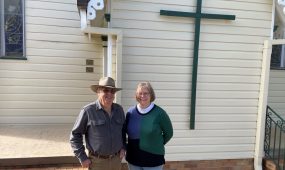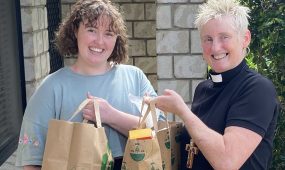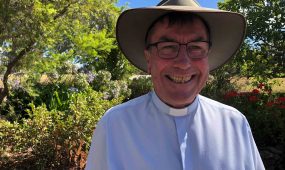Skyscapes, opal seams and scrub solitude
The Baru Beat
Find out the latest ‘Baru Beat’ news from The Rev’d Rick Gummow, including the characters he has met, the sights he has seen and the moments that have transformed his idea of solitude
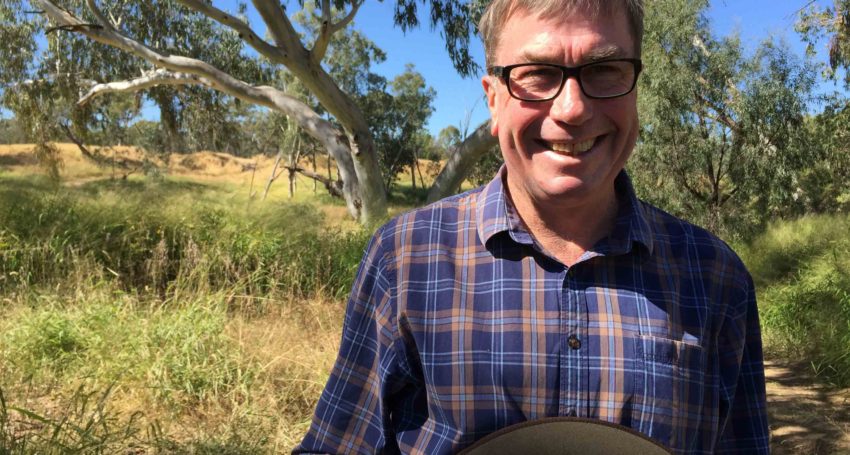
A Maranoa-Warrego parishioner surprised her husband of many years by booking a cruise up the Queensland coast to sail around the Great Barrier Reef, much to his consternation. “But I get seasick!” he moaned. “How would you know, you’ve never been on a boat?” she replied. So off they went, with her doing all eight hours of driving to the Port of Brisbane herself. I asked her why her husband didn’t help with the driving and she replied, “The last time he did that, when I dozed off, he turned around and I woke up at home.” “Sorry love, must have taken the wrong turn,” he said.
Related Story
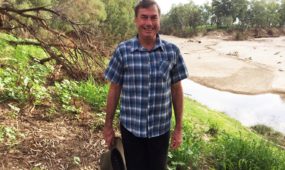 The Baru Beat
The Baru Beat
Welcome to ‘The Baru Beat’: a joey in a nappy and a bush burial
Of the many choices we humans make, often none surprises me more than where other people go to take a holiday, notwithstanding visiting family. What may surprise the urban and regional city dweller is that many people in the Maranoa-Warrego don’t head east, but west, for their annual leave. They head out to the living heart of Australia or to the Channel Country, put up their tarps beside a creek using the tray of their vehicle for a bed, and stay for the duration of their leave.
I have only been to the edge of this country, and the longer we are out here the more I, too, yearn to go further ‘inwards and outwards’, where the population density is so low, that the likelihood of seeing anybody is close to nil. The night sky is white with stars, without ‘light pollution’, and constellations that are unseeable from anywhere else in the world.
South West Queensland is not a uniform landscape. True, it lacks mountains, but so does the rest of Queensland apart from the far north. But that just makes the vistas available from the hills all the more majestic. As soon as you cross the Warrego River at Cunnamulla, heading west, the landscape changes quite dramatically and continues to change the further west you drive. The dirt becomes redder and redder, and after the Paroo River is crossed at Eulo (famous for its opals, honey, a particular saddler who does amazing leather work at a very reasonable price, and a truly beautiful camping site on the river), the properties get larger and are unfenced on the highway side.
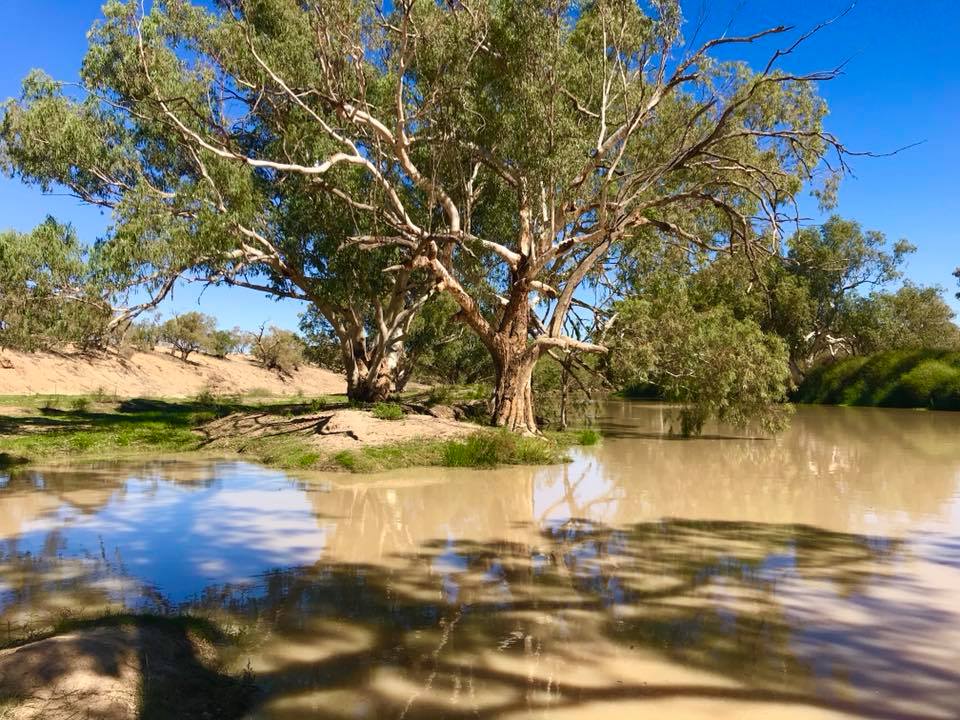
The Paroo River after rain
There are few towns west of here and the largest of these, Thargomindah, only has two hundred people. There are some parishes in our Diocese, in both metropolitan and regional areas, with more people coming to a single service than the entire population of many towns in the Western Region.
One of these little towns is Yowah, and to reach it you leave the highway after Eulo and travel north west for 90 km. It is a town of opal miners, which means it’s a somewhat secretive town. But, what I love about Yowah is that it has a hill, called Yowah Bluff. It’s a bit like navigating a flat sea for months and suddenly seeing a hazy spike of land. The view from Yowah Bluff is spectacular. There are no towns at all to be seen, just hundreds of kilometres of scrubby trees and red earth in all directions. The stunning beauty of what you see hits you quickly.
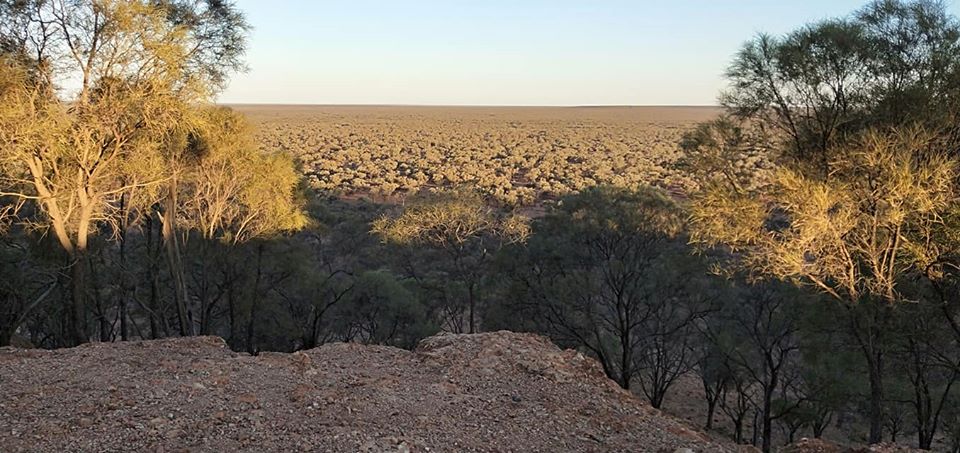
Yowah Bluff is one of the main attractions near the small town of Yowah, which is mostly known for its opals (it’s the most southern opal centre in the state of Queensland). Yowah Bluff is only a few kilometres from town, around 150 metres high, offering 180 degree views of the vast surrounds: “The view from Yowah Bluff is spectacular. There are no towns at all to be seen, just hundreds of kilometres of scrubby trees and red earth in all directions”
These moments challenge our very understanding of silence and solitude. Once we are still and the conversations in our heads have stopped, we hear the earth and everything in it. The scratching of a beetle on a stick and the noise a kangaroo makes when it’s eating.

“These moments challenge our very understanding of silence and solitude. Once we are still and the conversations in our heads have stopped, we hear the earth and everything in it. The scratching of a beetle on a stick and the noise a kangaroo makes when it’s eating” (Pictured: Yowah kangaroos)
I visit a wonderful lady in The Lodge, the Cunnamulla residential aged-care home, who spent 40 years as an opal miner in Yowah by herself. She shows me photos of her underground cave, which was her home, as well as pictures of psychedelic-looking opal seams. There is a picture of her as a far younger person leaning at her mine-home’s entrance with another person. A shotgun and a rifle are leaning against the red wall of her mine. I asked her about what she used the firearms for. “See that bloke,” she said pointing at the person in the picture with her, “he stole all my opals, the mongrel. Didn’t happen again I can tell you.” She suddenly looks up and dares me to ask her more.
Because of the Bush Ministry Fund (BMF), the Anglican Church gets to reach people in all these places, even where there aren’t even buildings. They supply the vehicles and the fuel – the two biggest expenses – and half the clergy stipend. Please support the BMF and make it your parish mission field, if possible. Come out and visit – it will be a holiday the likes of which you couldn’t have anywhere else on earth.

